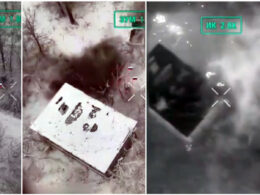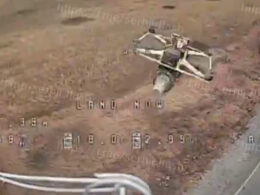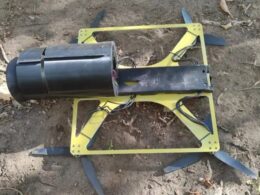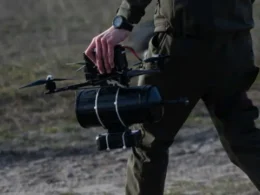Ukraine's defense technology incubator Brave1 has tested fiber optic cables on uncrewed ground vehicles (UGVs) to overcome Russian electronic warfare jamming, The War Zone reports.
The tests, conducted last week, involved seven different UGV models equipped with fiber optic control systems. This adaptation builds on Ukraine's successful implementation of fiber optic technology with first-person view (FPV) aerial drones.
"We are very interested in implementing fiber optic so that our [UGVs] can operate at longer distances and help us destroy the enemy even more effectively," said Capt. Alexander Jabchanka, Head of Robotic Systems Service of the Vovki Da Vinci Battalion, who was present during the testing.
Fiber optic cables provide significant advantages as they:
- Cannot be jammed by electronic warfare equipment
- Maintain connectivity in rough terrain and urban environments
- Don't require line-of-sight between the operator and the vehicle.
Overcoming terrain challenges
One key challenge being addressed is how UGVs with fiber optic cables perform on difficult terrain, including how to prevent cables from getting tangled on rocks, vegetation, and other obstacles.
"The platform must have reliable communication because it can be easily lost due to terrain distortions or other obstacles. The robot must be cross-country, that is, not get stuck in grass, snow, sand, and mud," Gleb Kanevsky, director of the procurement department of Ukraine's Ministry of Defense, told Ekonomichna Pravda.
While these systems have not yet been deployed to the frontlines, Brave1 showed promising test results: "The technology is still in the early stages, but we have managed to identify some promising solutions."
Unlike existing radio-controlled UGVs that Ukraine primarily uses for logistics, transportation, and mine-laying, the fiber optic variants are being developed specifically for kamikaze strikes and high-risk combat operations.
"Logistics tasks involving the same or different robots moving along the same route in one direction and back are less optimal due to the potential for fiber-optic cables to interfere with one another or objects on the ground," Brave1 told The War Zone.
In February, Ukraine had anticipated this technological evolution, introducing universal fiber-optic navigation modules called Shovkopryad (Silkworm). These modules are designed to integrate air, ground, and maritime drones.
According to Kanevsky, Ukraine plans to receive 15,000 UGVs this year compared to more than one million aerial drones.
The testing "proved the viability of optic-fiber-controlled UGVs in specific scenarios," Brave1 explained, adding, "Our next step involves developing the tactics for their application."
This development follows Ukraine's execution of what was described as the first all-drone assault last December, using FPVs and UGVs to attack Russian positions near the village of Lyptsi in Kharkiv Oblast.





